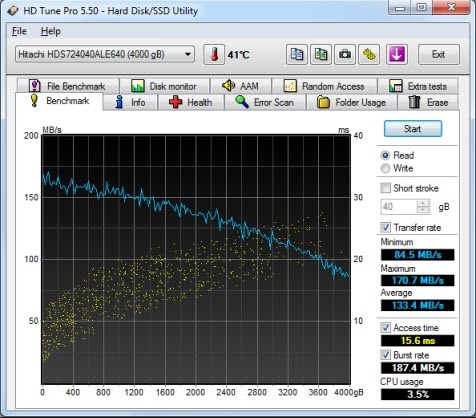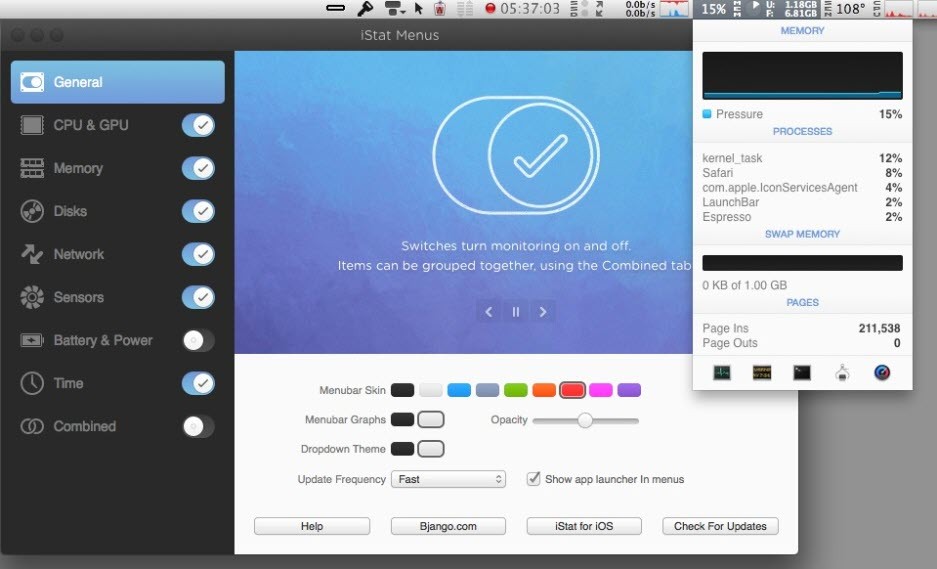6 ways to check if your hard drive is failing

Your computer’s hard disk drive (HDD) works diligently at storing your data, including files, operating system and other software. Although rarely visible, unless it is an external drive, this workhorse is consistently performing its duties — that is until your computer starts crashing.
Maybe your PC’s crashed into a blue screen and rebooted, or maybe your system took an unusual amount of time to open a folder. The hard drive may be producing strange noises you have never heard before, or you notice files disappearing.
If any of these events have occurred with your computer, whether it be Windows or a Mac, these signs are indicative of a failing HDD. When your hard drive dies, which it will eventually, without a proper backup, your data can perish as well. To prevent this from happening, here are six sites to help.
The red flags
If you ever suspect something is wrong with your computer, always back up your files immediately. The last thing you want to happen is a failure that leads to the loss of all those irreplaceable photos, work documents and passion projects.
While you’ll need to use a program to test your hard drive, the following signs are good indicators that something is wrong:
- Reduced performance
- Strange sounds
- File corruption
So your computer is experiencing all of the above. What can you do about it? If you own a Windows computer, here are a few helpful programs you should get.
1. Microsoft Check Disk
Did you know Windows computers have a built-in HDD checker? It’s called Check Disk. Here’s how to use it:
Note: Don’t start this process unless you know you can finish it uninterrupted, otherwise you can risk further damaging your HDD.
- Press Windows key + X and tap Command prompt (Admin).
- Type “cmd” in the search window then hit Enter and right-click to select Run as administrator.
- Type the command prompt CHKDSK/P and press enter to start scanning.
- Type CHKDSK C:/F/R and press Enter to repair corrupt sectors, if there are any.
The root drive has to be C: and the command can schedule a task at system startup. If it does, press Y to schedule a task and restart the computer to perform CHKDSK.
Once the check is complete, reboot your system.
2. HD Tune

HD Tune works with several types of storage devices including internal and external hard drives, solid-state drives, and memory cards. The program is easy to use and offers useful tests such as a benchmark read test, run & error scan.
HD Tune can help determine the health of your hard drive using S.M.A.R.T. — Self-Monitoring Analysis and Reporting Technology.
3. Partition Manager
When you want to check your hard drive for errors, try AOMEI Partition Manager. Simply download it from the site, then run it on Windows 10. Right-click the drive you want to check and go to Advanced > Check Partition.
A window will pop out and give you three options: Check error only, check and fix error, and find bad sectors. Choose the appropriate option for you. And that’s it! Partition Manager will take care of the rest.
While there are plenty of HDD testing programs for Windows, there’s no need to feel left out if you’re a Mac user. Here are a few macOS programs that can help.
4. CleanMyMac X

Ideal for verifying and repairing the startup disk, CleanMyMac will scan, clean and optimize your system by freeing up disk space. In addition, this software can remove outdated caches, incomplete downloads and Mail/Photo/iTunes clutter.
Although there is a free trial version, the full version pricing starts at $34.95 for one Mac license.
5. PowerMyMac
Unlike the other programs, PowerMyMac frees up disk space, optimizes your Mac with useful features, uninstalls apps, monitors performance and more. Download the program, then check your HDD, SDD or even flash drives.
Just open the program and choose Status. It will reveal the health of your CPU, Memory and, most importantly, your HDD.
6. IStat Menus 6

IStat Menus 6 is a system monitoring utility for the macOS menu bar. Notifications of events include CPU and GPU usage, memory, disks, battery, network sensors and more. In addition, the app provides S.M.A.R.T. status monitoring, detailed disk I/O and other read and write indicators.
There is a free seven-day trial with a subscription required afterward.
Tags: Apple Mac, apps, backup, battery, computer, crashing, devices, downloads, files, Microsoft Windows, Microsoft Windows 10, network, operating systems, photos, restart, software, space
